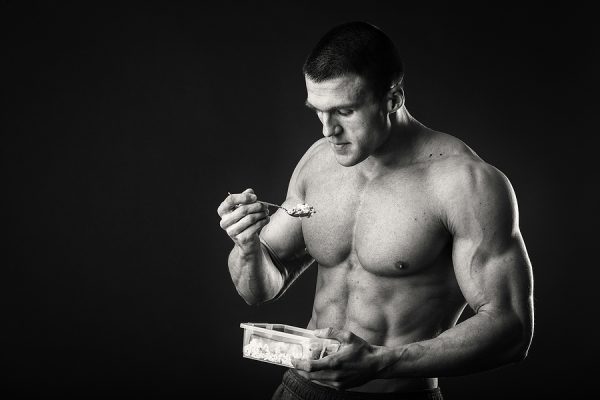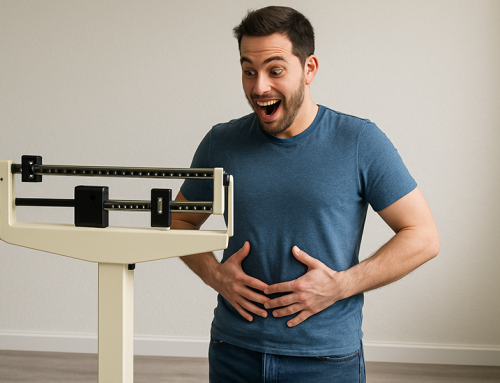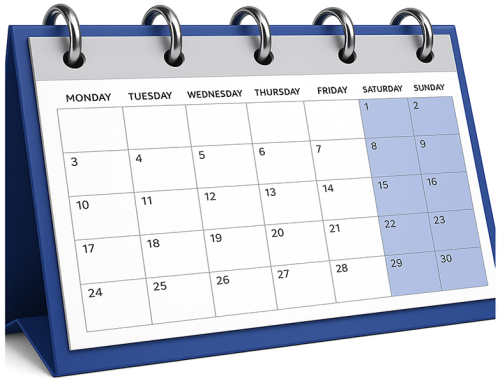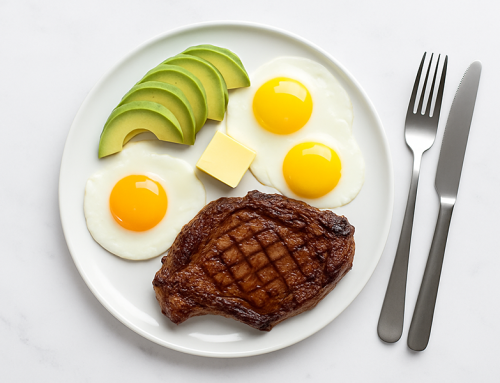When it comes to fat loss while maintaining or building muscle, is there such a thing as a perfect diet plan? If so, is it possible that the bodybuilding-style diet, which has been around for decades is still the best fat loss diet, despite countless other diets being available today? If so, why? If not what are the downsides of bodybuilding diets? If “it depends,” what does it depend on?… In today’s Burn the Fat Blog Post, I respond to a reader on this burning question…

Question: Hey Tom, I know that diet is the most important priority for fat loss and that we need to create a calorie deficit to lose weight. But I’m also wondering if experts have ever agreed if there is a perfect diet for fat loss based on what foods, what macros, how many meals, and so on. I know you’re probably going to say, “It depends” but isn’t it possible there’s one optimal approach for people who want pure fat loss (not just weight loss) while maintaining or gaining muscle? I remember hearing about bodybuilding diets back in the early 1990s from Bill Phillips, Larry North, Lee Labrada, Keith Klein and some other bodybuilders and it’s similar to what you’ve been teaching for almost as long, except that you don’t promote supplements and meal replacements.
The idea behind the bodybuilding diet was simple. You’d eat 4 to 6 meals a day. Sometimes macro percentages were recommended, but always a source of lean protein in every meal (about the size of the palm of your hand), fibrous vegetables (1 to 2 cups depending on the type), and an unprocessed starchy carb (about the size of a fist). This was combined with weight training 4 to 5 days a week and cardio at least a few days a week. To increase fat loss, starchy carb portions would be smaller. Even though this kind of eating seemed most popular in the 1990s and 2000s, wouldn’t you agree that bodybuilder diets are still the best?
Answer: On one hand, if you’re arguing the case that bodybuilding style diets are great for losing pure fat while maintaining muscle and for building muscle, you’re preaching to the choir. I have indeed been eating similar to the way you described for decades, and I still do to this day. I have not changed or jumped on any new bandwagons. I also recommend bodybuilding diets to others who have the same goals (bodybuilding and better body composition).
On the other hand, I have to stop a little short of saying it’s the perfect diet or the best diet. There have also been some slight changes in guidelines over the years to help people individualize their diet plans better than we did 20 or 30 years ago.
There’s no such thing as a single diet that’s perfect for everyone
If we’re talking about the best diet for bodybuilders and physique athletes, that narrows down what is optimal at least a little. But if we’re considering the whole population and general weight loss and health goals, there’s no such thing as a perfect fat loss diet. No one should waste their time perpetually searching for the ultimate perfect diet, only what’s best for them.
The main reason is because individuals are so different in their lifestyles, genetics and health conditions. The ideal diet for an individual depends on these and many other factors.
You also have to be careful not to dismiss personal food preferences when talking about an ideal diet. You can’t prescribe one diet to the whole world and assume it will be enjoyed and embraced by everyone, especially when you think about cultural differences as well.
It’s not a simple matter of taste preference either, it can be a matter of ethics (as when vegetarians don’t want to eat meat). It can be a matter of allergies or intolerances so certain foods must be avoided. It can also be a matter of convenience (as in the case where some people don’t want to eat 5 or 6 times per day like many bodybuilders do).
One possible definition of a perfect fat loss diet
We could argue that a “perfect fat loss diet” is one that helps an individual get in a calorie deficit in the most painless way possible for them, given their preferences, and which they can stick with the easiest because they like the diet and eat foods they enjoy.
Choosing a diet that meets these criteria increases adherence. When it doesn’t feel like you’re on a diet because the diet hasn’t banned foods you like, it’s a lot easier to stick to. Even if a diet sounds perfect on paper, if you’re forced to eat foods you hate or forbidden to eat your favorite foods and feel deprived, that’s not a perfect diet for you. Part of what constitutes a perfect diet for you is whether you can stick with it. If you can’t stick with it, what’s the use? Everyone knows how high weight loss relapse rates are.
There are general principles of fat loss dieting, some of which must be practiced by everyone. The first fat loss priority is achieving a calorie deficit. The second is eating adequate protein. The third priority is to eat mostly unprocessed, nutrient-dense foods (including plenty of veggies and fiber), which is for health as much as it is for supporting fat loss.
Once these three criteria are met however, how you choose to individualize your diet doesn’t matter as much as most people think, or at least what’s left is what we call the details (or minutia). There are countless ways to diet to maintain a calorie deficit and lose fat including a variety of different food options and ratios of carbs and fat.
There are many different dietary paths that lead to the same destination (fat loss)
Some achieve a deficit with time restricted feeding, some do it with a keto diet, some do it with a vegan diet. I don’t believe these diets are optimal for most people because they all impose major restrictions, but you can’t deny they work for different types of people, and some people like eating these ways. If you look at rankings by mainstream media, the Mediterranean diet always comes up with high marks. But that’s typically looking through the lens of health not necessarily fat loss.
I remember all those nutrition gurus from the 1990s by name who promoted bodybuilding diets. We’re cut from the same cloth – influenced by classic style bodybuilding nutrition, which still works like a charm to this day. Fundamentals never get old. There’s no such thing as a new fundamental. That’s why the bodybuilding diet is still an excellent method. It’s what I’ve recommend since I started coaching in the early 1990s and having been recommending here on the (Burn the Fat Blog site) since we opened in 2006.
Doing bodybuilding nutrition by macros (protein, carb and fat grams) is more precise than portion sizes like a “palm-sized serving” and so on. That’s why my first book, Burn the Fat, Feed the Muscle promoted macro-based nutrition. Arguably a “perfect” fat loss diet would involve tracking macros.
However, a diet can also work without counting and tracking simply by having plating and portioning guidelines. It can work even better if you also train yourself to recognize your body’s signs of physical hunger and fullness. (In a future article, I’ll talk more about using a hunger-satiety scale as an alternative to counting calories).
How to assemble a meal in a bodybuilding – style diet
The simple prescription is the 1-2-3 meal building method: A bodybuilding-style meal looks like this:
1. Protein (mostly lean proteins)
2. Fibrous carb (non starchy vegetables and greens)
3. Starchy carb.
The number one priority is making sure there’s a protein with every meal.
Dairy products are optional. When consumed, they are preferably low or nonfat varieties. Many people can’t eat dairy due to lactose intolerance, which is another example of how diet plans must be individualized. Classic bodybuilding diets for competition (fat loss) used to omit dairy, but based on science today, if you’re not intolerant, there’s no reason not to consume dairy products if you like them. Some dairy products like Greek Yogurt can be excellent protein sources, great for snacks because it’s convenient and doesn’t require meal prep.
Dietary fat isn’t mentioned in the main 3-part meal builder formula, but small amounts of fat may be included in each meal or in slightly larger portions in 1 or 2 meals a day. This might include olive and other healthy oils, avocado, nuts or seeds. Also, fats are found in some protein foods. For example if you eat salmon, we call that the protein source, but it also contains healthy fats. You get some dietary fat from eggs as well, if you include any yolks. (A lot of bodybuilders use mostly egg whites but include a whole egg or two per day).
Assembling a meal doesn’t get much easier than this 1-2-3 formula and if you do it this way, your macros are automatically balanced fairly well. You can fine tune the macros even more using an app to track grams of protein, carbs and fat or proactively planning macro-based meal plans using software (such as our Burn the Fat Meal Planner, which is available here in the Burn the Fat Inner Circle members-only area.
The meal frequency of a “perfect” fat loss diet
For people who also want to gain or maintain maximum muscle, 4 to 5 meals a day is ideal (some bodybuilders still eat 6). The reason for this is because if you follow the “protein with every meal guideline” but if you only eat 3 times a day, those protein servings have to be very large to hit optimal daily intakes. (They have to be huge if you only eat 1 or 2 times a day). Eating protein at least 4 to 5 times a day helps you almost automatically fall into the optimal range for total daily protein.
People who are only pursuing weight loss and are not bodybuilders would be fine with 3 meals if eating frequently is an inconvenience. This is one difference inhttps://www.burnthefatblog.com/contact/ nutrition guidelines today compared to 20 or 30 years ago – we make a distinction between dieting for fat loss and dieting for building muscle. There are differences between these two goals. We also encourage customizing meal frequency. But once you choose a meal plan schedule, you should stick to it. Eating randomly and or eating a lot of unplanned snacks is counterproductive for fat loss.
Frequent protein intake is optimal for bodybuilders, but anywhere from 3 to 6 feedings a day (includes snacks and shakes) works fine for regular folks dieting for fat loss. The key priority is the calorie deficit with adequate daily protein, not the number of meals.
One reason meal frequency guidelines for fat loss changed is because it takes more effort to eat 5 to 6 times a day (there’s extra meal planning, meal prep and time involved). If people see it as a huge inconvenience, that can decrease adherence. In addition, controlled studies discovered quite a few years ago that increasing meal frequency does not increase metabolism (which was another thing that was widely believed back in the 1990s).
It’s ideal to choose your own meal schedule and eating frequency that you feel you will stick to the best. Think about what meal schedule will make it easiest to stay in a calorie deficit (which may mean choosing the meal schedule that that keeps your hunger in check the best). Then, you simply focus on hitting your calorie and macro targets for the day (especially protein).
Tweaking carbohydrate intake to optimize fat loss
During phases when building muscle is the primary goal, I don’t skimp on starchy carbs. I eat a substantial portion of foods like oatmeal (rolled oats), whole grain bread, potatoes, sweet potatoes, rice, beans, quinoa and other whole grains with almost every meal. For fat loss, I eat more moderate portions of starchy carbs. If fat loss slows down or if the goal changes to getting ripped, I eat only small portions of starchy carbs and focus more on fibrous carbs and lean protein.
I won’t go as far as to call this the “perfect diet” but in my experience, the most no brainer to get ripped – almost automatically – is to eat primarily lean protein and fibrous carbs (vegetables), while lowering the amounts of starchy carbs. Some people call this the “lean and green diet.” A couple years ago, I talked about this from a different angle in a post called, ‘Burn the Fat Or Die – aka, gun to the head fat loss‘.
It’s important to acknowledge that reducing the starchy carbs doesn’t help increase fat loss because there’s anything inherently fattening about starchy carbs outside of their higher calorie density. In other words, reducing starchy carbs is about controlling your calories or increasing your calorie deficit. Lower carbs can work very well, but it is not fat loss magic.
Final thoughts about a “perfect fat loss diet”
By now you can see there is no such thing as a single perfect fat loss diet for everyone. There’s simply a handful of nutrition guidelines everyone must follow to optimize results. From there you customize your plan to fit your preferences, which will improve adherence.
With that said, there’s no doubt about it, bodybuilding style nutrition is up there with the best diets for fat loss. Always has been, still is, always will be. There have been a few refinements to the diet guidelines over the years so keep those in mind. Customizing meal frequency is one of the major ones.
We’ve also learned that using flexible dieting produces better adherence than rigid all or nothing dieting. You don’t have to eat 100% unprocessed food all the time. Back in the 1990s, people on bodybuilding diets tended to be a lot more rigid. When Body For Life was released, a once a week cheat day became popular. We now know there is room to include discretionary calories, but you have to you ensure you still have the same deficit. That’s why the free-for-all “cheat day” concept lost favor.
I’ve always suggested a 90% guideline. This means make it your goal to eat 90% of your calories come from unprocessed, nutrient-dense foods. (At least 80%). The other 10% of your weekly calories be anything you want. All you have to do is make sure you stay in your deficit and you’ll still lose fat. Following this guideline also ensures good health.
Guidelines for building muscle mass have also been refined a lot over the years, including both diet and training. That made me think, maybe a good blog post topic in the near future would be a list of bodybuilding advice I used to believe and promote 25 years ago that I’ve changed my mind about today because of newer evidence. Let me know what you think.
-Tom Venuto, Author of, Burn the Fat, Feed the Muscle (BFFM)
Author, The BFFM Guide To Flexible Meal Planning For Fat Loss
Founder, Burn the Fat Inner Circle
Related: How To Get Ripped

Tom Venuto is a natural bodybuilding and fat loss coach. He is also a recipe creator specializing in fat-burning, muscle-building cooking. Tom is a former competitive bodybuilder and is today a full-time fitness writer, blogger, and author. His book, Burn The Fat, Feed The Muscle is an international bestseller, first as an ebook and now as a hardcover and audiobook. The Body Fat Solution, Tom’s book about emotional eating and long-term weight maintenance, was an Oprah Magazine and Men’s Fitness Magazine pick. Tom is also the founder of Burn The Fat Inner Circle – a fitness support community with over 52,000 members worldwide since 2006. Click here for membership details






The assumption that ” everyone ” desires washboard visible and and.6% body fat.levels may not be valid.
I doubt strength athletes do..powerlifters, Olympic.lifters, football players, and the like.
Most people who strive for that level.of body fat (drug free) lose muscle and strength along with fat.